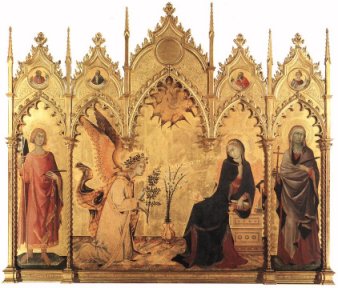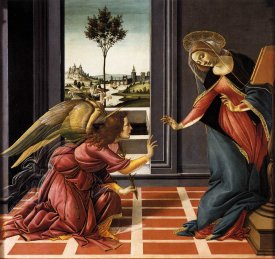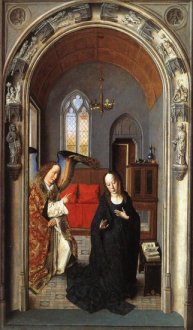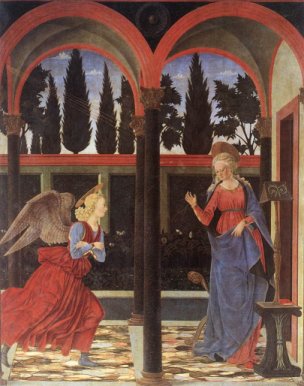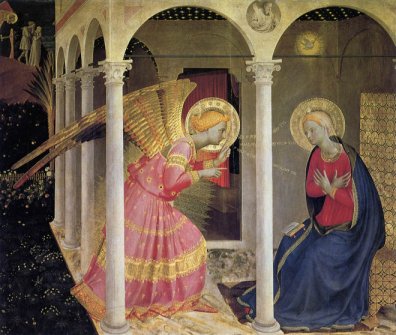|
The story unfolds |
|
|
The dialogue between Gabriel and
Mary can be broken down into four stages. |
|
|
|
|
|
|
|
|
|
|
|
Stage 2: Reflection This stage, known as cogitatio, is again illustrated with distinctive hand gestures: one hand on the breast and the other open. The face is generally deep in thought. |
|
|
|
|
|
Stage 3. Questioning - How shall this be done? This stage, known as interrogatio, is the least frequently illustrated in art. Mary's hand is raised in enquiry. In this painting, Gabriel has folded his arms and appears to be in listening mode. |
|
|
|
|
|
Stage 4. Acceptance. The fourth stage, know as humiliatio, illustrates Mary's final words: Behold the handmaid of the Lord; be it done to me according to thy word. Again, hand gestures are the key: Mary crosses her hands across her breast in a gesture of humility. All of Fra Angelico's Annunciations illustrate humiliatio. |
|
|
|
|
|
The virgin annunciate. This stage is not taken directly from the bible narrative. It shows the virgin deep in thought following the departure of the angel. The best known version is this one by Antonello da Messina. Antonello painted the annunciate virgin a number of times, but this one, in Palermo, is the best. |
|
|
|
|
| This all seems very straightforward, but, of course, life's not like that. Many artists combined the various stages, or did their own thing entirely. By the Baroque period much of this careful biblical referencing was lost. | |
